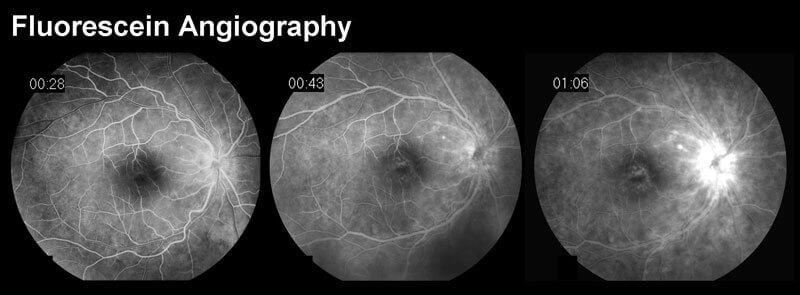Choroidal Neovascular Membranes
Inside your eye, a healthy, intact retina is key to clear vision. The retina is the light-sensitive tissue lining the back of the eye. It converts light rays into electrical impulses that travel through the optic nerve to our brain, where they are interpreted as the images we see.
Choroidal neovascular membranes (CNVM) are new blood vessels that grow beneath the retina and disrupt vision. These blood vessels grow in an area called the choroid, the area between the retina and the sclera (the white part of your eye). The choroid supplies oxygen and nutrients to the eye. CNVM occurs when new blood vessels start to grow in the choroid and break through the barrier between the choroid and the retina. When CNVM leak in the retina, they cause vision loss.
CNVM are associated with many serious eye diseases, most commonly wet age-related macular degeneration. In addition, CNVM are found in patients with histoplasmosis, eye trauma and myopic macular degeneration, an eye disease in patients who are extremely nearsighted.
Symptoms of CNVM
If you have CNVM, you may experience painless vision loss. You may notice blank spots in your vision, especially your central vision. Your vision may be distorted, so that straight lines appear bent, crooked or irregular.
Other symptoms may include:
- Size of objects may appear different for each eye;
- Colors lose their brightness or colors do not look the same for each eye;
- Light flashes or flickering in central vision.
Because wet age-related macular degeneration accounts for most patients with CNVM, they are most commonly found in people age 50 or older with the risk growing with age.
Care for CNVM
OCB’s highly experienced retina team specializes in care of choroidal neovascular membranes and is a leading referral center for conditions of the retina. If your OCB ophthalmologist suspects this condition, he or she will take special photographs of your eye using fluorescein angiography and optical coherence tomography (OCT).

Treatment options for CNVM may include anti-VEGF medications, laser treatment or photodynamic therapy. Your OCB eye doctor will determine which therapies are best for you based on the underlying cause of the disease, how far it has progressed and your unique individual needs and will develop a treatment plan designed to yield the best possible outcome for you and your quality of life.
Treating CNVM can help stabilize your vision and prevent further vision loss. However, in many patients it is not possible to regain lost vision. In such cases, your OCB Retina Center Team will coordinate the support you need to learn to make the most of your remaining vision.
